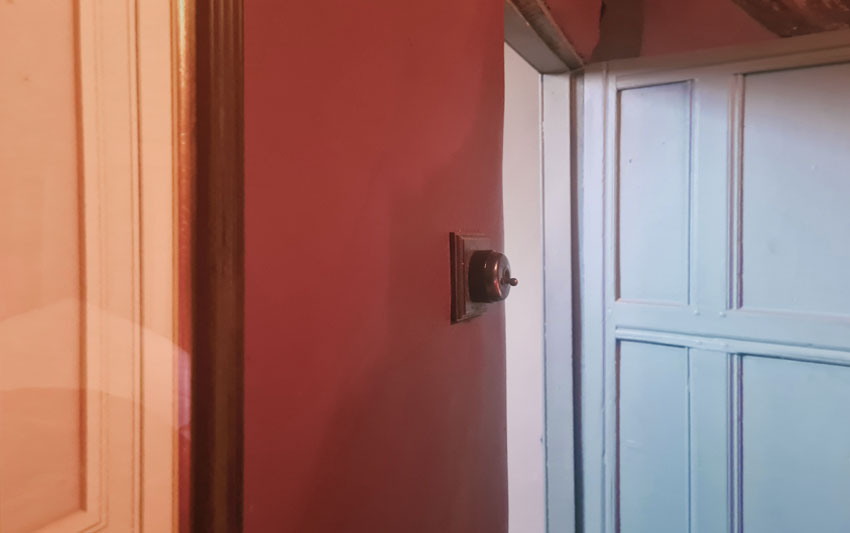The best dolly switch for domestic interiors
The design of the light switches that we are familiar with today has changed over the years that the supply of electricity has been available to domestic houses, shops and offices. These design changes have been driven by new technologies, the aesthetics current at different periods and whether the switches were fitted onto single walls with surface wiring or onto walls with a cavity into which cables could be inserted. This article concentrates on how to achieve the feel of traditional lighting schemes using dolly type switches.
Switches had been produced in earlier years of the 19th century for isolated installations but the history of the dolly switch really began in the 1880s and 90s when Thomas Edison and others began their manufacture to accompany their new distributed electric supply networks. As the end decades of the 19th century passed the building of local electrical generating plants (firstly by private operators, then by town and city councils throughout Britain) slowly grew into a nationwide network in the 1930s.
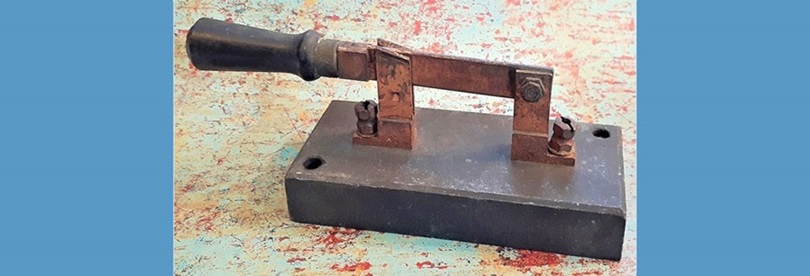
An early knife switch of the type used in the famous Cragside, Northumberland set up. William Armstrong, the owner, installed a dynamo creating the world’s first domestic hydroelectric plant. Electricity from this plant was used to power the house and the many farm buildings on the estate from 1870.

A handmade light switch made for a boudoir mirror and dressing table. The lights may have been powered by an early battery set up or, perhaps, a local hydroelectric supply. The contact mechanism is silver plated, the insulating base is bone and it has a Guilloché enamel on silver decorative cover. The switch is hallmarked in London for 1869.
Many of the earliest of these mass manufactured switches were of the rotary type.

An early rotary switch with a brass cover. It has been said that this type of mechanism emulated the tap fitted to gas lights. An electrical switch designed this familiar way would lessen the anxiety that prospective customers felt for the new power supply.

A US made rotary switch from the first quarter of the 20th century and sold in Britain.
The pictures show a 19th century English switch and a later one from US where they were in use for longer than the UK. It is possible to get the feeling of this look using this modern European made switch.
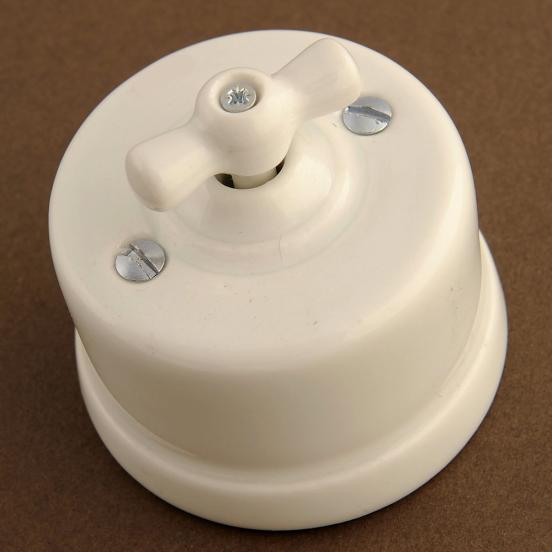
Modern ceramic rotary dolly switch
In Britain, the development and adoption of the tumbler switch began in the 1880s – 1890s

An 1890s British tumbler switch with a ribbed cover. Made by the Thomas Edison / Joseph Swann collaboration, ‘Ediswan’.
The earliest of these tumblers invariably featured a ribbed cover made from brass, originally polished, but becoming tarnished to a darker colour in use. This motif was widely used at the time and featured elsewhere in lighting including oil lamps and other early light shades.

An original pendant light from the 1890s.
So, when installing modern dolly switches these...

Ribbed covered dolly switches - black base
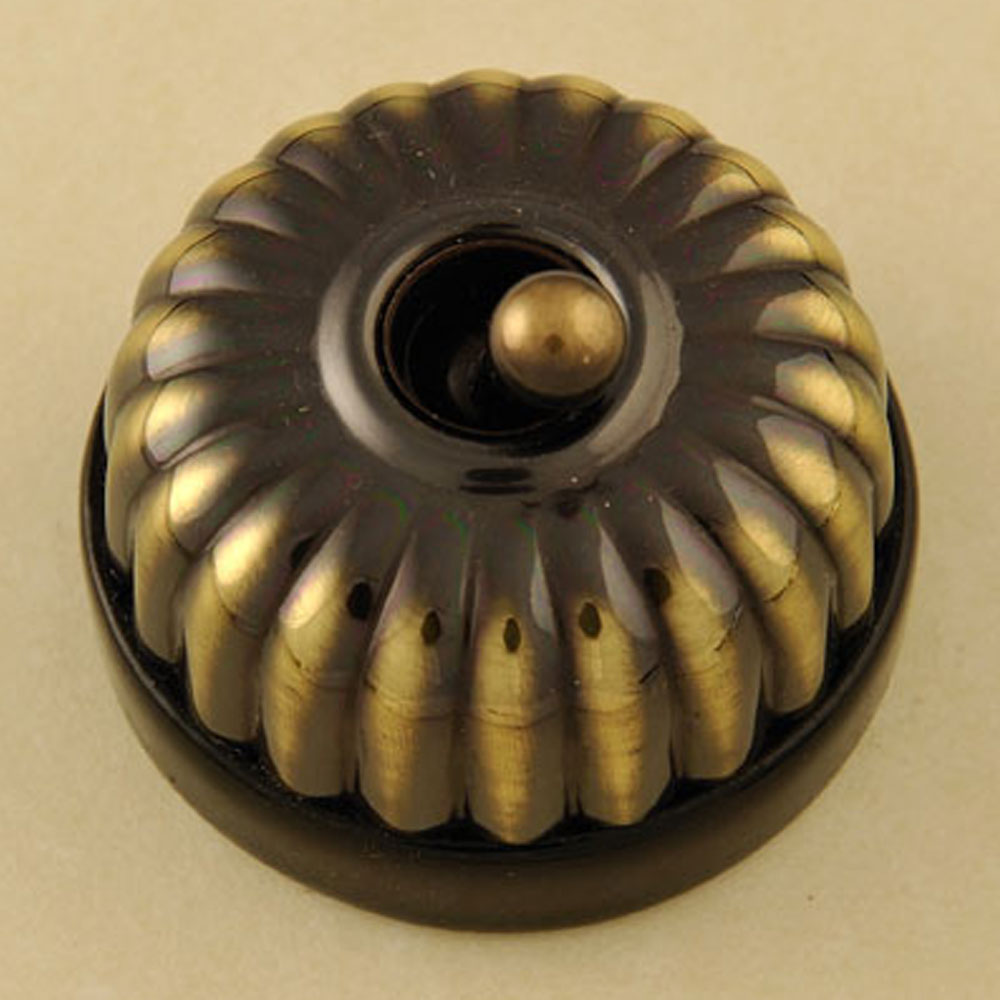
Antiqued ribbed covered dolly switch
...would be a good choice if a late 19th century look is required as the black base reflects Victoria’s and the country’s adoption of the colour after Albert’s death in 1861. Otherwise, a white base is more suitable after her death until the changes in taste of the Edwardian period took hold.
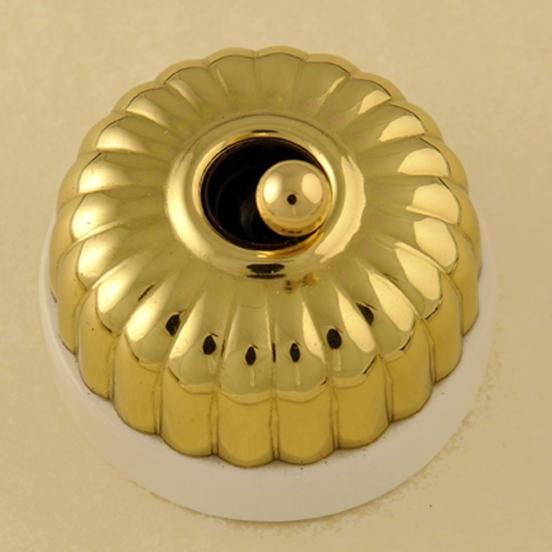
Two changes in dolly switch style took place during Edward VIII’s time – the Edwardian period. Firstly, patinating and then plating brass with nickel became popular. Then, more streamlined switches started to appear. This continued to develop up to WWII.
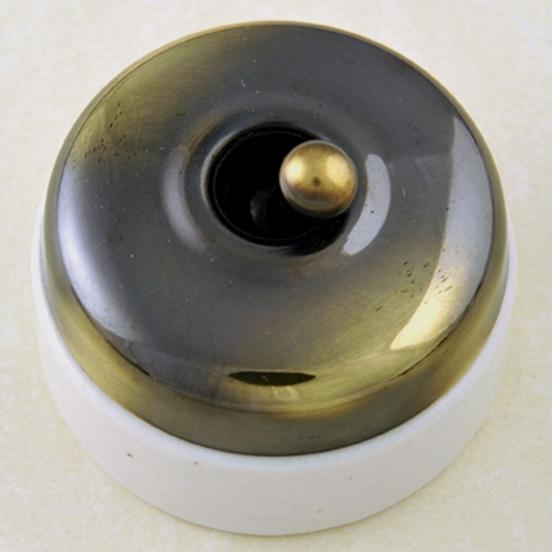
A patinated plain cover popular from the end of WWI to the 1930s
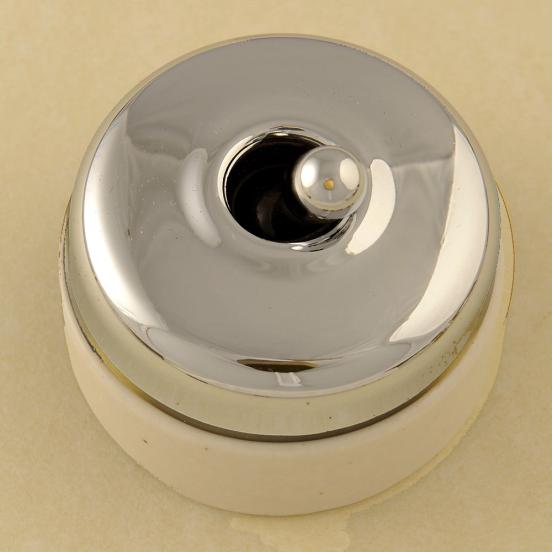
A chrome plated cover became popular during the 20s and 30s Art Deco period
But then, from its 1909 patent, marketed especially for its electrical insulation properties, Bakelite slowly took off as the value material used in many varied volume products. So, during the housing boom of the early 20th century, the manufacture of dolly light switches was an obvious choice to make using this new electrically inert, cheap and easy to accurately mass manufacture material. Familiar to many, the Crabtree Lincoln became the most commonly encountered switch right up until the 1960s.
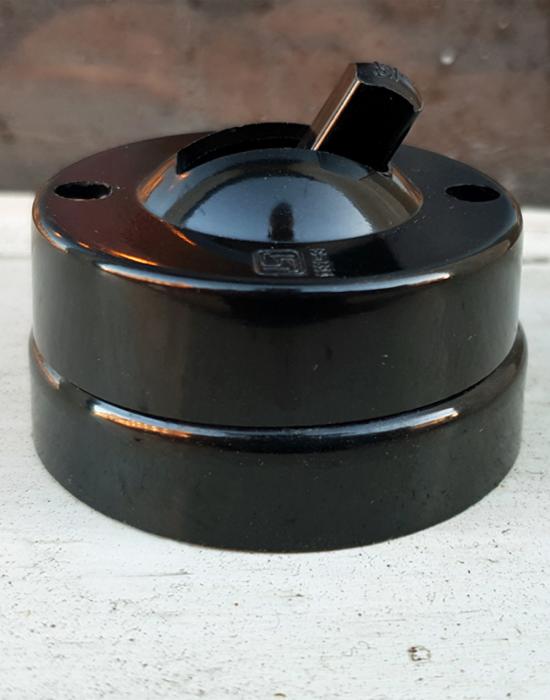
A modern recreation of the widely used Lincoln Bakelite switch
